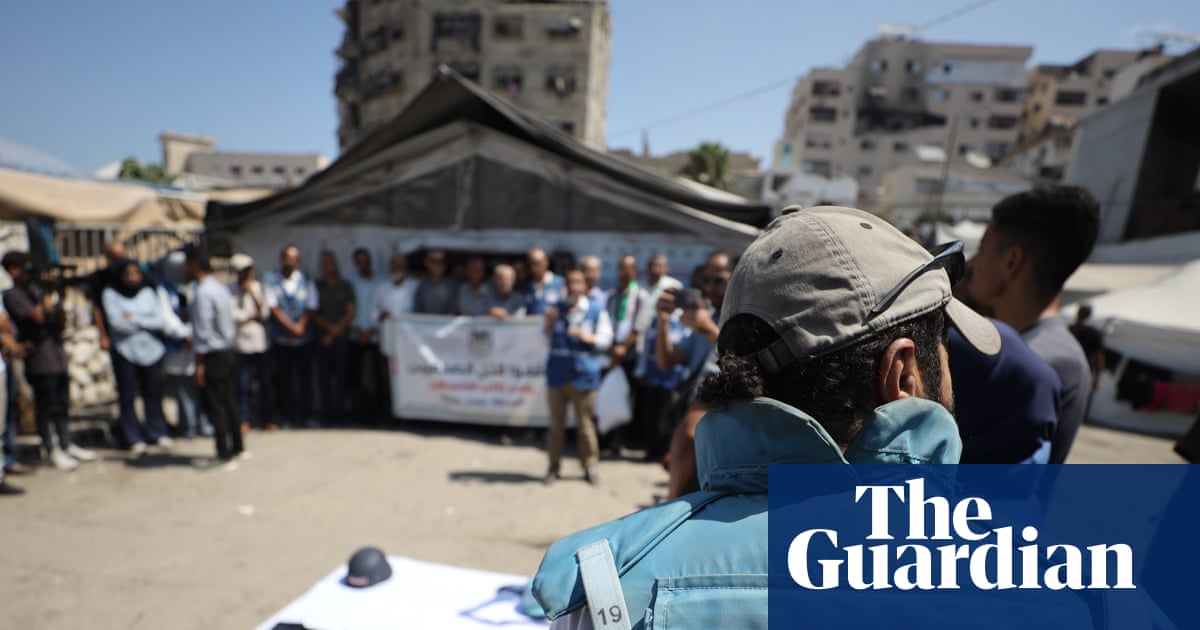Gaza Hospital Hit Twice, Journalists Among Dozens Killed
A hospital in southern Gaza was struck
twice in what witnesses call a “double-tap” attack.
The first strike hit the upper levels of Nasser Hospital.
Just minutes later, a second strike targeted rescuers and journalists who had rushed to help the wounded. At least 20 people were killed, including five journalists.
The timing of the second strike raises questions that go beyond the battlefield. A “double-tap” attack—hitting once, then striking again when rescuers and journalists gather—is widely seen as a tactic meant to maximize fear, silence witnesses, and discourage reporting. That is why press freedom groups are treating this not just as a tragic mistake but as a possible deliberate message.
Killing journalists on live coverage ensures fewer independent voices can document what is happening on the ground, leaving only official narratives to control the story. In conflicts where information is as powerful as weapons, the destruction of cameras and reporters can be as strategically valuable as taking out enemy positions. This has fueled suspicions that the hospital strike was not only about a military target but about shaping what the world sees and remembers.
The deaths of Hussam al-Masri, Mariam Abu Dagga, Mohammed Salama, Moaz Abu Taha, and Ahmed Abu Aziz highlight a disturbing pattern: journalists who risk their lives to document wars often end up becoming direct targets. These reporters were not carrying weapons, but cameras, notebooks, and microphones—tools that expose truths governments may prefer to keep hidden. When so many media workers from major outlets are killed in one strike, it raises suspicions that silencing coverage was as much the goal as any claimed military purpose. Journalists on the ground provide the world with images and testimonies that cannot be filtered through official channels, and by removing them, a conflict shifts from open reporting to controlled narrative. For many observers, the loss of these reporters is not just a human tragedy but a signal that the battle for information is being fought as aggressively as the battle for territory.
The claim that the strike was aimed at a Hamas surveillance camera is difficult to separate from the larger pattern of justifying civilian deaths with vague or unproven military targets. By pointing to a camera that no one outside the military has seen, officials create a narrative that frames the attack as necessary, while avoiding accountability for the loss of journalists and hospital staff. This explanation fits a familiar playbook in modern conflicts where “dual-use” objects—anything from cell towers to media equipment—can be labeled as hostile assets after the fact. Without independent evidence, many view such claims less as factual reports and more as a way to manage outrage, buying time while shifting focus away from the possibility that journalists themselves were the real obstacle to be removed.
The calls for an impartial inquiry highlight a deeper struggle over who controls the narrative of war. When the UN, press watchdogs, and advocacy groups demand accountability, it signals that many believe these strikes are not isolated accidents but part of a systematic silencing of voices that document civilian suffering. Yet history shows that such investigations often stall, are watered down, or disappear under diplomatic pressure, especially when the country involved has strong allies shielding it from consequences. This has led many to suspect that “inquiries” function more as political theater than as real paths to justice—statements meant to calm outrage without ever punishing those responsible. For journalists and advocates, the demand for transparency is not just about one hospital strike, but about breaking a cycle where war crimes are endlessly investigated yet rarely acknowledged or stopped.
Sources
-
Reuters – Israel hits Gaza hospital, killing at least 20 people, including five journalists (turn0search3)
-
The Guardian – Israel bombed Gaza hospital a second time, killing rescuers, say health officials (turn0search9)
-
AP News – Israel’s strike on Gaza hospital killed journalists and rescuers (turn0search16)
-
Reuters – Initial inquiry says Hamas camera was target of Israeli strike that killed journalists (turn0news33)
-
AP News – Israeli military says strike aimed at Hamas camera, no proof given (turn0news32)
-
Reuters – Leaders, journalist groups react to Israeli Gaza strike that killed five journalists (turn0news38)
-
The Guardian – Profiles of journalists killed in the Gaza hospital strike (turn0news24)
-
The Guardian Live – UN tells Israel there “needs to be justice” after Gaza hospital bombing (turn0news0)
Please Like & Share 😉🪽
@1TheBrutalTruth1 Aug 2025 Copyright Disclaimer under Section 107 of the Copyright Act of 1976: Allowance is made for “fair use” for purposes such as criticism, comment, news reporting, teaching, scholarship, education, and research.

.jpg)


.jpg)
Comments
Post a Comment